#Griffen Benshoff
Photo

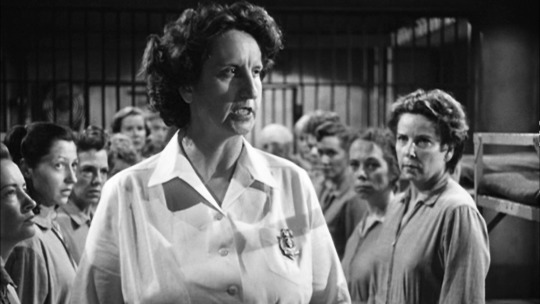
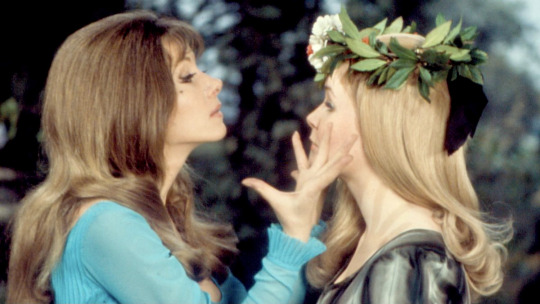

"Stereotypical images, like all aspects of culture, change and evolve over the years. Queer women in classical Hollywood films often appeared as spinster aunts or prison matrons, but by the 1970s, they were often being represented as vampires, a trope that turned same-sex love and affection into something cruel and monstrous. By the twenty-first century, a wide variety of openly queer people and queer "looks" has made it more difficult for the mass media to create new stereotypes, but traces of the old ones can still be discerned."
-From Queer Images: A History of Gay and Lesbian Film in America by Griffin Benshoff
*Images are from Arsenic and Old Lace (1943), Caged (1950), The Vampire Lovers (1970), and Vampire Killers (2009)
#queer representation#Griffen Benshoff#queer history#queer film#Arsenic and Old Lace#1943#Caged#1950#The Vampire Lovers#1970#Vampire Killers#2009#lgbt#lgbtq#lgbt+#lgbtq+#queer stereotypes#lesbian#lesbian stereotypes
613 notes
·
View notes
Text
Blog Assignment 01/28/22
Blog Assignment 01/28/22
American civil rights movements are historically driven to reconstruct the injustice and racial discrimination present in the United States societal systems. “America on Film” by Harry M. Benshoff and Sean Griffin and “Race, Reform, and Rebellion; The Second Reconstruction in Black America, 1945-1990” by Manning Marable take on the role of giving context to and explaining how the reconstruction movements of racial inequality in the United States were not sufficient in implementing drastic societal change.
America on Film highlights the importance of being able to decode and encode underlying meaning that the media that we consume. The concept of ‘decoding’ encapsulates the idea that the surface-level consumption of knowledge may not be the true intention of the message. Alternatively, the reading explains that ‘encoding’ is the ability to purposely, or indirectly, embed a deeper meaning within the text. These tools are utilized when authors deliver messages regarding how racism and inequality in the United States have been systematically ingrained into the U.S. Government, Legislation, and even Constitution. ‘America on Film’ utilizes examples of American cinema throughout history to depict how the existence and acknowledgment of patriarchal capitalism is directly correlated to why and how the same realist and materialist conflict resides concerning Critical Race Theory. American films held/hold a significant amount of influence on the population; when the writers and individuals responsible for the creation of media that influence the public to follow were “historically, straight white men in Hollywood” it did not encourage the acceptance of “women, people of color, and/or homosexuals” (Benshoff, Griffen, America on…, 15). The ability to decode the racially motivated messages that were intertwined in the media that we as humans consume hold heavy importance. The author provides sufficient amounts of economic vocabulary to explain the theme of American patriarchal capitalism; introducing the idea of acknowledging the origin of racial inequality in the United States is slavery and lack of governmental support towards biracial democracy. The harsh and necessary presence of civil rights activism in the 21st century aims to promote the fundamental aspects supported by CRT to acknowledge the connection between reality and how it is directly affected by the media we consume.
‘Stereotype’ carries significance to understand the resistance and lack of progress towards an equal society, specifically in the United States. Through the teachings and lectures, we took a deep dive into understanding the existence of racial hierarchy and privilege. We discussed how stereotypes are “oversimplified and overgeneralized assumptions [that] become standardized” (Lecture Slides). The idea that the continuation and recurring racial hatred is derived from the continued use of racial stereotypes gives grounds to acknowledge the role white privilege plays/played in media creation. The author utilizes the principles and ramifications that stereotyping has on society throughout the reading, but on page 7, they state “while ostensibly living in a ‘free and equal society, most Americans are aware that certain groups still have more opportunities and protection than others”. The damage that stereotypes regarding people of color have is drastic and further promotes the institutionalized racism we study today.
“Race, Reform, and Rebellion; The Second Reconstruction in Black America, 1945-1990” by Manning Marable utilizes the Civil War and the Second Reconstruction periods in the United States to shed a light on racial inequality, as well as the significance of why there isn't substantial change present in today's society derived from the two periods. Reconstruction in America refers to attempting to instill societal change; however, the presence of slavery and white supremacy in United States history presents the challenge of transforming generational racism and morals within the minds of active members of society. The author argues that the oppression of people of color and minorities in the United States has established a dominant cultural foundation that allows racially-biased mentalities, such as White Supremacy and cultural racism, to be accepted within society. The text aims to connect historical evidence and parts of history to the lack of equality present in society to the lack of support towards a biracial democracy.
The key term ‘Civil Rights’ is intertwined throughout the message of Race, Reform, and Rebellion; acknowledging the inadequate representation of society as a whole. Civil rights are “a group of laws designed to protect various groups against dis- crimination based on race, sex, religion, age, national origin, and other characteristics” (Appendix B, BLST129. The key term connects to the content of the class through recognizing how in “1883, the Supreme Court declared the Civil Rights act of 1875 unconstitutional” (Marable, 7). This exemplifies how equality did not financially or situationally benefit white officials for people of color to be seen as equal within society and obtain the ‘civil rights’ detailed in the constitution because it disrupted the present structure of America society s in which we also decoded during lecture.
0 notes
Photo

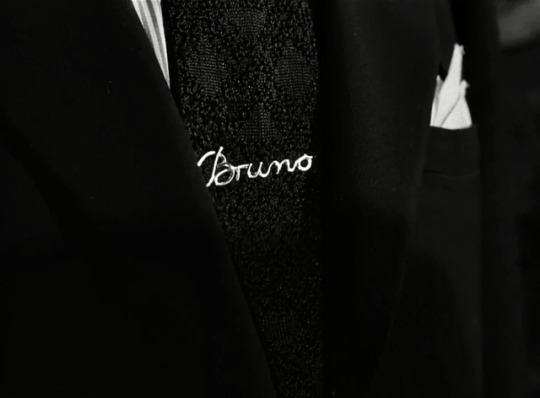
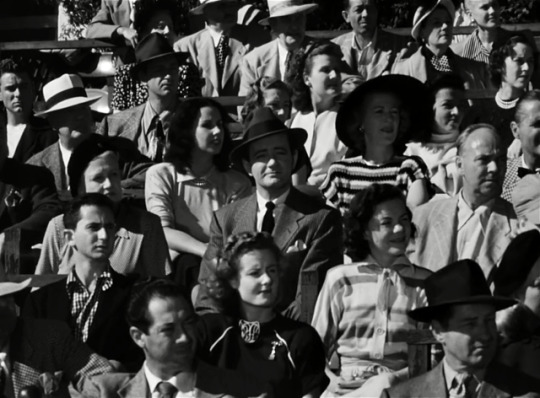
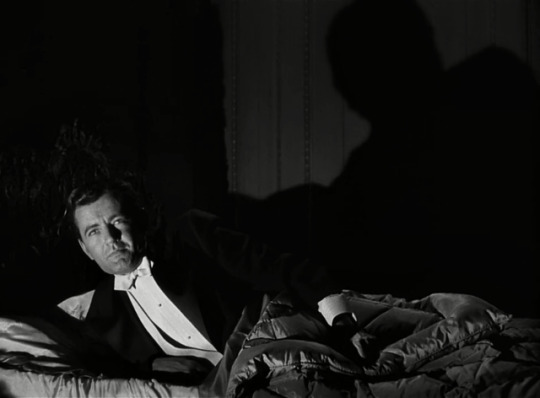
The visual and narrative style of Strangers on a Train carries many trademarks of the film noir genre. Reading Bruno Antony as a homosexual villain positions him as Hitchcock’s version of a femme fatale subverting 1950s norms and ushering in a new sexual deviance in cinema that creates a unique spectatorial experience.
Chiaroscuro lighting, having emerged during the silent era through German Expressionism and segueing into Hollywood gangster films of the 1930s, evolved into the low-key lighting patterns of the film noir genre. This visual style, aided by a mise-en-scene of dark claustrophobia, aimed to manifest the nihilistic attitudes of the genre’s morally-torn protagonist. This film noir protagonist, an active male agent, is commonly matched with a femme fatale who utilizes cunning sexuality to further her own gains. Thus, the success of the male protagonist often depends upon his ability to withstand the siren song of the femme fatale. Strangers on a Train exemplifies many of the traits found in the film noir cycle. In addition, the screenplay is credited to Raymond Chandler, an enormously successfully writer of hard-boiled fiction, who also wrote the screenplay for 1944’s landmark film noir Double Indemnity. These hallmarks: a distinct visual style, an active male protagonist, and the femme-fatale all signal the genre of film noir.
Film noir staples from this period such as Double Indemnity or The Postman Always Rings Twice concern a femme fatale luring a male protagonist to commit murder in exchange for her wild sexuality. This narrative device circumscribes the genre with a penchant for exploring vulnerable American masculinity in the context of a new post-war culture and positions the femme fatale as the missing link in attributing Strangers on a Train to the film noir cannon.
It is in regards to this element, the femme fatale, that proves to be so carefully designed as to elude the casual viewer. As indicated by Benshoff and Griffen, film noir’s femme fatales were “women who lured men into their sphere of influence and would just as easily murder a man as marry him…[the femme fatale] pursued her own desires (sexual and otherwise) instead of passively supporting the male lead” (223). Having already established two of the three criteria for situating Strangers on a Train as film noir (dark, expressionistic visual motifs and a melodramatic crime narrative centered around wounded American masculinity), I wish to argue that the character of Bruno Antony is Hitchcock’s transgressive version of a femme-fatale, a character obviously typically female, who utilizes sexuality at the expense of the male protagonist for personal gain and pleasure. x
#also never forget that rope also has a guy as ~homme fatale~#noirvember#strangers on a train#robert walker#classic hollywood#film#vintage#black and white#1951
114 notes
·
View notes